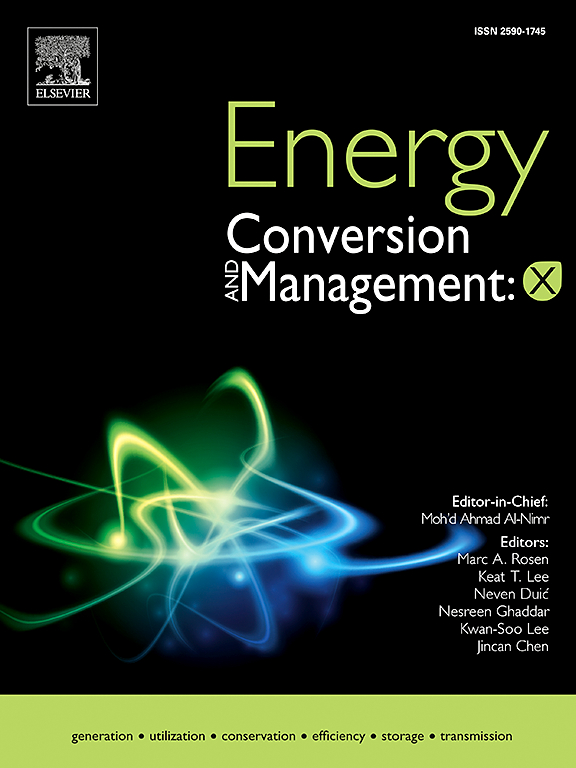Pyrolysis as a strategic element in energy system transformation to achieve net zero emissions
IF 7.1
Q1 ENERGY & FUELS
引用次数: 0
Abstract
This study evaluates pyrolysis as a dual-purpose technology for integrating negative emissions and dispatchable electricity into Germany’s power system, supporting climate neutrality by 2045. Using a myopic power system model, we assess the role of pyrolysis, which operates solely on residual biomass. By 2050, pyrolysis can reach an installed capacity of 5 GW, supplying 2 % of total electricity generation. Its flexible power output reduces the need for hydrogen storage by 60 %, as it generates electricity during low renewable supply periods and offsets CO2 emissions from gas-fired power plants through biochar sequestration. This enables continued gas plant operation without new investments while maintaining a net-negative CO2 balance. Pyrolysis deployment is closely linked to solar PV availability, expanding earlier in high-solar regions, and its integration increases battery storage capacity by 240 %. The expansion of pyrolysis is driven by investment costs (CAPEX) and electricity demand, with lower CAPEX—below 308 €/(tBM/year) for pyrolysis plants and 2,300 €/kWel for power generation units—accelerating deployment. Rising electricity demand enhances pyrolysis’ role as a flexible power source, even under high CAPEX conditions. These findings highlight pyrolysis as a strategic enabler of energy system decarbonization, uniquely combining dispatchable renewable electricity and negative emissions. Its integration underscores the need for a diversified power plant portfolio to maintain system flexibility and stability, providing essential insights for policymakers, investors, and energy planners on optimizing market frameworks and deployment strategies.
求助全文
约1分钟内获得全文
求助全文
来源期刊

Energy Conversion and Management-X
Multiple-
CiteScore
8.80
自引率
3.20%
发文量
180
审稿时长
58 days
期刊介绍:
Energy Conversion and Management: X is the open access extension of the reputable journal Energy Conversion and Management, serving as a platform for interdisciplinary research on a wide array of critical energy subjects. The journal is dedicated to publishing original contributions and in-depth technical review articles that present groundbreaking research on topics spanning energy generation, utilization, conversion, storage, transmission, conservation, management, and sustainability.
The scope of Energy Conversion and Management: X encompasses various forms of energy, including mechanical, thermal, nuclear, chemical, electromagnetic, magnetic, and electric energy. It addresses all known energy resources, highlighting both conventional sources like fossil fuels and nuclear power, as well as renewable resources such as solar, biomass, hydro, wind, geothermal, and ocean energy.
 求助内容:
求助内容: 应助结果提醒方式:
应助结果提醒方式:


